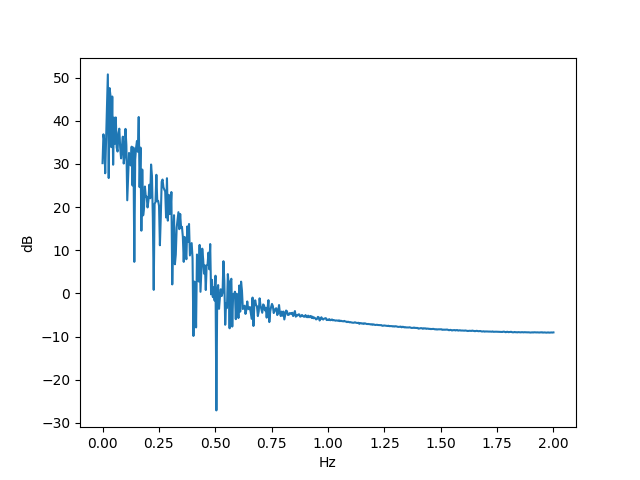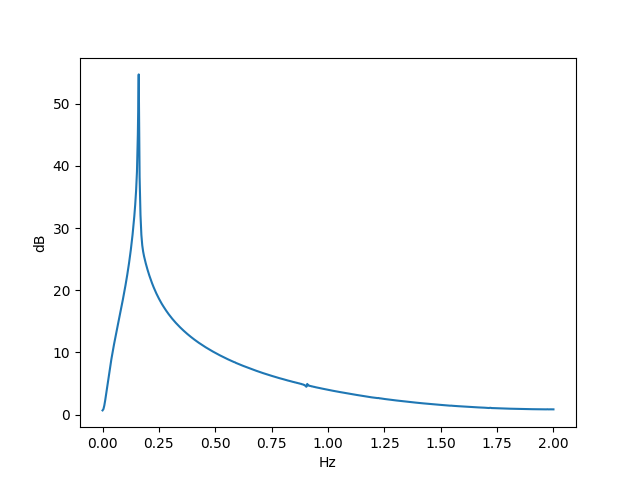Chaos in the frequency domain
Solutions to the non-linear differential equation
x'' + 0.25x' + x(x^2 - 1) = 0.3 cos t
are chaotic. It's more common to see plots of chaotic systems in the time domain, so I wanted to write a post looking at the power spectrum in the frequency domain.
The following plot was created by solving the equation above over the time interval [0, 256] at 1024 points, i.e. sampling the solution at 4 Hz. I then took the FFT and multiplied it by its conjugate to get the power spectrum. Then I took the log base 10 and multiplied by 10 to convert to decibels.

By contrast, if we look at the linear equation
x'' + 0.25x' + x = 0.3 cos t
and compute the power spectrum, we get

As is often the case, a small change to the form of a differential equation made a huge change in its behavior.
There's a spike at 1/2 Hz because the steady-state solution is
x(t) = 1.2 sin(t).
The power spectrum is more than just a spike because there is also an exponentially decaying transient component to the solution.
For more on steady-state and transient components of the solution, see Damped, driven oscillations.
Related postsThe post Chaos in the frequency domain first appeared on John D. Cook.